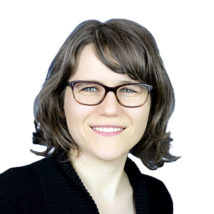
Physics writer Emily Conover joined Science News in 2016. She has a Ph.D. in physics from the University of Chicago, where she studied the weird ways of neutrinos, tiny elementary particles that can zip straight through the Earth. She got her first taste of science writing as a AAAS Mass Media Fellow for the Milwaukee Journal Sentinel. She has previously written for Science Magazine and the American Physical Society. She is a two-time winner of the D.C. Science Writers’ Association Newsbrief award.

Trustworthy journalism comes at a price.
Scientists and journalists share a core belief in questioning, observing and verifying to reach the truth. Science News reports on crucial research and discovery across science disciplines. We need your financial support to make it happen – every contribution makes a difference.
All Stories by Emily Conover
-
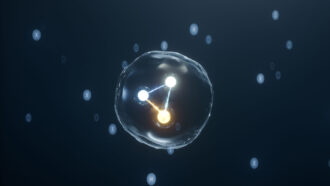 Particle Physics
Particle PhysicsProtons contain intrinsic charm quarks, a new study suggests
The massive quarks — counterintuitively heavier than the proton itself — might carry about 0.6 percent of a proton’s momentum.
-
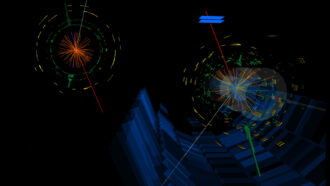 Particle Physics
Particle PhysicsPhysicists spotted rare W boson trios at the Large Hadron Collider
By measuring how often triplets of particles called W bosons appear, scientists can check physics’ standard model for any cracks.
-
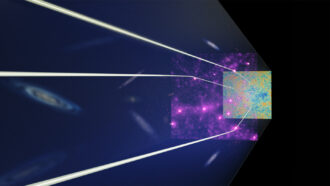 Cosmology
CosmologyScientists mapped dark matter around galaxies in the early universe
A technique used to reveal dark matter could also shed light on a disagreement about the clumpiness of matter in the cosmos.
-
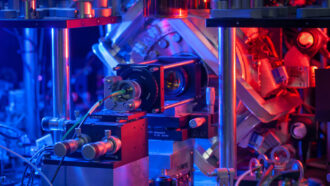 Quantum Physics
Quantum PhysicsQuantum entanglement makes quantum communication even more secure
Bell tests proved that quantum mechanics really is “spooky.” Now they’ve made quantum communication even more hacker-proof.
-
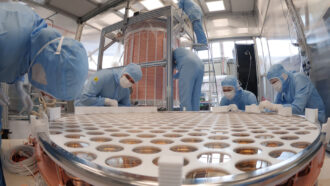 Physics
PhysicsA new dark matter experiment quashed earlier hints of new particles
Unlike its earlier incarnation, the XENONnT detector found no evidence of extra blips that scientists had hoped indicated new physics.
-
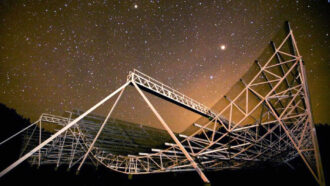 Astronomy
AstronomyA fast radio burst’s rapid, steady beat offers a clue to its cosmic origin
Amped-up neutron stars, pairs of magnetically entangled neutron stars or magnetar quakes could explain a three-second-long train of radio blips.
-
 Physics
PhysicsWiggling metal beams offer a new way to test gravity’s strength
A new experiment aims to get a better handle on “Big G,” the poorly measured gravitational constant.
-
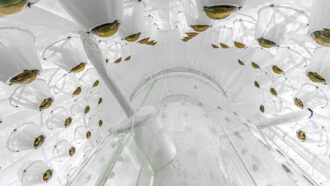 Particle Physics
Particle PhysicsA supersensitive dark matter search found no signs of the substance — yet
The LZ experiment’s first measurement raises hopes that scientists are closer than ever to finding the source of much of the universe’s mass.
-
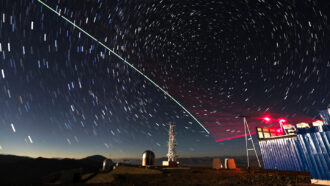 Quantum Physics
Quantum PhysicsAliens could send quantum messages to Earth, calculations suggest
Scientists are developing quantum communications networks on Earth. Aliens, if they exist, could be going further.
-
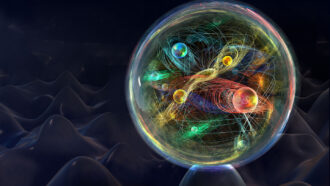 Particle Physics
Particle PhysicsHow physicists are probing the Higgs boson 10 years after its discovery
The famous particle may point to cracks in the standard model and new physics beyond.
-
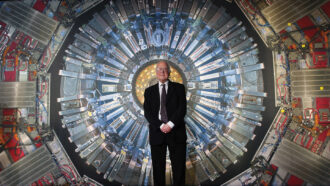
‘Elusive’ profiles the physicist who predicted the Higgs boson
Peter Higgs, as Frank Close reveals in his new book, was just one of many physicists who helped crack the mystery of mass’s origins.
-
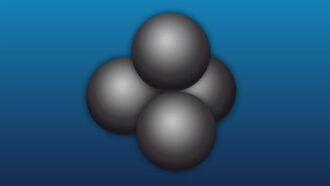 Physics
PhysicsPhysicists may have finally spotted elusive clusters of four neutrons
Long-sought clumps of four neutrons called tetraneutrons last less than a billionth of a trillionth of a second, an experiment suggests.